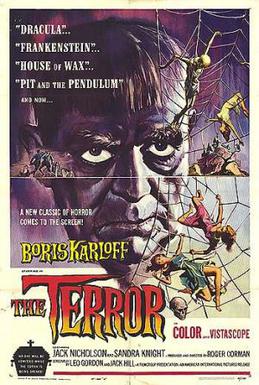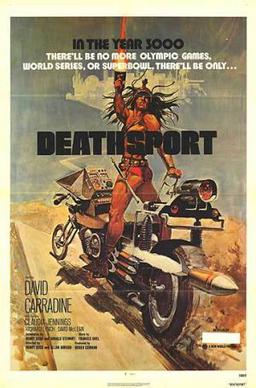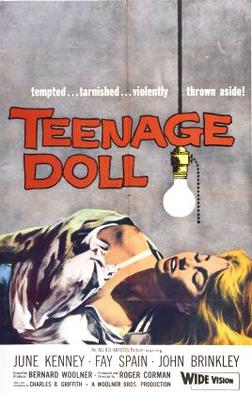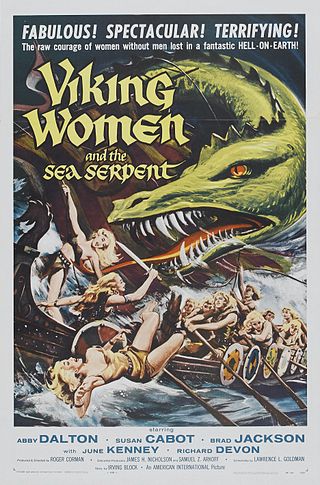Plot
In the ancient Greek era, King Proximates, a ruthless tyrant, besieges a city for months but struggles to secure victory. Seeking a resolution, he meets Telektos, the besieged city's king, who proposes settling the conflict through a duel between champions. Proximates agrees, demanding ten days to choose his fighter.
Accompanied by the priestess Candia and philosopher Garnis, Proximates travels to the Olympic games to recruit a local champion, Atlas. Unsuccessful in convincing Atlas, he instructs Candia to manipulate the young man. Despite Garnis' jealousy, they secure Atlas for the duel.
The duel takes place in the besieged city's stadium, and Atlas easily defeats the opposing champion. In a strategic move, Proximates orchestrates a fake attack during a banquet, leading to Telektos' unjust execution for alleged involvement. Atlas and Candia attempt to escape to Egypt but are unsuccessful.
A battle ensues between Proximates' army and the rebels, with Atlas leading the charge. Proximates flees on horseback after his forces are decimated. Atlas and the rebels realize the need to eliminate Proximates. In a retaliatory act, Proximates kills Garnis, prompting Atlas to strategize an ambush in a valley.
The rebels successfully ambush Proximates' army, leading to a final battle where Atlas kills the tyrant. In the aftermath, Atlas and Candia depart for Egypt, leaving the conquered city behind.
Production
Development
Griffith talks about the origins of the project:
I was involved in an Israeli war picture about helicopters, which never got finished, when Roger decided to make Atlas. This was after Little Shop, and I wanted to make it as Atlas, the Guided Muscle, but Roger wanted to make a Hercules, Italian-type thing. Roger had a deal to shoot it in Puerto Rico, so it was going to be a jungle picture about Atlas and Zeus. Ancient Greece could have jungles, so why not? But I was on my way to Israel because of the helicopter picture that collapsed in the desert. So Roger and I flew to New York together, and we worked on the details of Atlas. Then I boarded a ship going to Israel... I was stranded in Israel for two years, and Roger wouldn't send me the fare to get out. I wound up doing some pictures in Israel. [3]
According to Corman, he was going to England to make a film about Gary Powers' U2 crash called I Flew a Spy Plane Over Russia based on a script by Robert Towne, but says Towne got writer's block after twenty pages. "I decided to leave London because I looked like an idiot," says Corman. [4]
He decided since he was in Europe he might as well make a movie. With the massive international popularity of Hercules , Corman thought he would make his own entry in the sword and sandal genre with a film shot in Greece instead of Italy.
Corman's original plan was for an epic film in wide screen and colour to be released initially on a roadshow circuit by his Filmgroup organisation instead of Filmgroup's usual black and white double features. [5]
Independent producer Vion Papamichelis agreed to put up half the budget, around $40,000. Corman hired Charles Griffith, who was living in Tel Aviv, and gave him four weeks to write the script. Griffith recalls:
Roger called me up from Athens and said he was going to do Atlas there instead of Puerto Rico after all, but I had to rewrite the script completely. So I went to Athens, and he paid me $200 to rewrite it and $50 a week to be associate producer, production manager, action director, do first-aid duty and everything else. He picked up a girl [Barbara Comeau] who did all the other work. She was wardrobe, script girl, and makeup, and she had no experience at all. "Women know how to do makeup," Roger says, "and anybody can do scriptwriting." [3]
Griffith wrote the script in only a few days and said he used the same structure he had employed on Naked Paradise, Beast from the Haunted Cave and Creature from the Haunted Sea. Corman arranged three actors he had made several films with, Barbara Mouris, Michael Forest and Frank Wolff, to come from the US. [6]
Corman's schemes changed when his Greek partner did not come through with the promised funds, a week before filming. Corman says he had invested $20,000 in the project to date. " I decided that, rather than lose the money I'd already invested, I'd compromise," he said. "I'd raise a little more money and shoot the film like I did the old, low-budget westerns. I rememberéd that I had done The Gunslinger in only six days. So, I decided to film Atlas as if it was a low-budget western." [4]
He raised $75,000 and shot it in fifteen days. [7] "The best thing about the film probably was the revisions we did on the script," said Corman. "We felt when we rewrote the script that it would be a great picture. But we ran into problems in shooting around Greece, because of all the ruins." [8]
Corman said they constantly had to add lines explaining the ruins. "At one point, we had Atlas turn to the film's villain, Praximedes, and say ‘Tell me, Praximedes, why is it that your part of the country is in ruins?’ Praximedes smiles and says. ‘We've had constant warfare around here for six hundred years. We've destroyed all our buildings!’" [4]
Shooting
Corman was led to believe a donation in the right place would ensure 500 Greek soldiers fully costumed and equipped as extras for his massive army. Only 50 turned up, leading Corman to rapidly change his original screenplay to use a smaller group of soldiers. [6]
Griffith said filming "was terrible" and "Frank Wolff and a couple of other actors... were very rebellious. Roger was in a towering rage throughout. There was a Greek cameraman and a Greek crew. Nobody knew left from right. The army couldn't march. They tore the noseguards off their papier-mache helmets, so that their relatives could recognize them in the picture, and there was paper hanging down from their helmets. The tips of their spears were hanging down because they were made out of rubber, which I had to have done at a tire shop around the corner of the set. It was a lot of fun.... Roger broke his sunglasses in half and had a temper tantrum. He went a little mad during that picture. We went off afterwards and got shipwrecked." [3]
Griffith adds, "the Greeks froze the money we brought in, so we couldn't use the cash to shoot the picture. We all had to share hotel rooms, but nobody did any sleeping. They got me cheap at fifty dollars a week." [3]
Corman managed to complete his film, shot in ruins around Athens such as the Parthenon with sequences shot at UCLA with Dick Miller and Roger Corman himself as soldiers. [9] Corman was able to use stock footage from Universal's Sign of the Pagan . Despite these problems, Corman was able to complete the film for US $108,000 rather than the planned $100,000 budget.

Roger William Corman was an American film director, producer and actor. Known under various monikers such as "The Pope of Pop Cinema", "The Spiritual Godfather of the New Hollywood", and "The King of Cult", he was known as a trailblazer in the world of independent film.

The Little Shop of Horrors is a 1960 American horror comedy film directed by Roger Corman. Written by Charles B. Griffith, the film is a farce about a florist's assistant who cultivates a plant that feeds on human blood. The film stars Jonathan Haze, Jackie Joseph, Mel Welles, and Dick Miller, who had all worked for Corman on previous films. Produced under the title The Passionate People Eater, the film employs an original style of humor, combining dark comedy with farce and incorporating Jewish humor and elements of spoof. The Little Shop of Horrors was shot on a budget of $28,000. Interiors were shot in two days, by utilizing sets that had been left standing from A Bucket of Blood.

The Wild Angels is a 1966 American independent outlaw biker film produced and directed by Roger Corman. Made on location in Southern California, The Wild Angels was the first film to associate actor Peter Fonda with Harley-Davidson motorcycles and 1960s counterculture. It inspired the biker film genre that continued into the early 1970s.

Attack of the Crab Monsters is a 1957 independently made American black-and-white science fiction-horror film, produced and directed by Roger Corman, that stars Richard Garland, Pamela Duncan, and Russell Johnson. The film was distributed by Allied Artists as a double feature showing with Corman's Not of This Earth.

The Undead is a 1957 horror film directed by Roger Corman and starring Pamela Duncan, Allison Hayes, Richard Garland and Val Dufour. It also features Corman regulars Richard Devon, Dick Miller, Mel Welles and Bruno VeSota. The authors' original working title was The Trance of Diana Love. The film follows the story of a prostitute, Diana Love (Duncan), who is put into a hypnotic trance by psychic Quintus (Dufour), thus causing her to regress to a previous life. Hayes later starred in Attack of the 50 Foot Woman (1958). The film was released on February 14, 1957 by American International Pictures as a double feature with Voodoo Woman.

The Terror is a 1963 American independent horror film produced and directed by Roger Corman. The film stars Boris Karloff and Jack Nicholson, the latter of whom portrays a French officer who is seduced by a woman who is also a shapeshifting devil.

Walter Frank Hermann Wolff was an American actor whose film career began with roles in five 1958–61 Roger Corman productions and ended a decade later in Rome, after many appearances in European-made films, most of which were lensed in Italy.

Creature from the Haunted Sea is a 1961 horror comedy movie directed by Roger Corman. Written by Charles B. Griffith, the movie is a parody of spy, gangster, and monster movies, concerning a secret agent, XK150, who uses the name "Sparks Moran" in order to infiltrate a criminal gang commanded by Renzo Capetto, who is trying to transport an exiled Cuban general with an entourage and a large portion of the Cuban treasury out of Cuba. Filmgroup released the movie as a double feature with Devil's Partner.

Gas-s-s-s is a 1970 post-apocalyptic black comedy film produced and released by American International Pictures.

Beast from Haunted Cave is a 1959 horror/heist film directed by Monte Hellman and starring Michael Forest, Frank Wolff and Richard Sinatra. It was produced by Gene Corman, Roger Corman's brother. Filmed in South Dakota at the same time as Ski Troop Attack, it tells the story of bank robbers fleeing in the snow who run afoul of a giant spider-like monster that feeds on humans. The film was released as a double feature with The Wasp Woman (1959).

Charles Byron Griffith was an American screenwriter, actor, and film director. He was the son of Donna Dameral, radio star of Myrt and Marge, along with Charles' grandmother, Myrtle Vail, and was best known for writing Roger Corman productions such as A Bucket of Blood (1959), The Little Shop of Horrors (1960), and Death Race 2000 (1975).

Deathsport is a 1978 science fiction action sports B-film produced by Roger Corman and directed by Allan Arkush and Nicholas Niciphor. The film stars David Carradine and Playboy Playmate Claudia Jennings. It would be one of Jennings' last films before her death.

Apache Woman is a 1955 American Western directed by Roger Corman and starring Lloyd Bridges. It was Corman's second film as director, following Five Guns West. It was one of four Westerns he made for American International Pictures, the other being Five Guns West, The Oklahoma Woman (1955) and Gunslinger (1956). Corman says Apache Woman and Oklahoma Woman were from ideas by AIP whereas the others were his ideas. This was the first film from Golden State Productions, a company headed by Alex Gordon.

Naked Paradise is a 1957 drama film directed by Roger Corman. It stars Richard Denning and Beverly Garland.

Teenage Doll is a 1957 film noir directed by Roger Corman, starring June Kenney and John Brinkley. It was financed by Lawrence Woolner, who had previously made Swamp Women with Corman. One writer called it Corman's "most impressive teen flick".

The Saga of the Viking Women and Their Voyage to the Waters of the Great Sea Serpent is a 1958 American action-adventure horror film directed by Roger Corman. It stars Abby Dalton, Susan Cabot and June Kenney.

Ski Troop Attack is a 1960 American war film directed by Roger Corman and starring Michael Forest, Frank Wolff, Richard Sinatra and Wally Campo. Filmgroup released the film as a double feature with Battle of Blood Island (1960).

Last Resort is a 1986 comedy film directed by Zane Buzby and produced by Julie Corman. It revolves around George Lollar, who takes his family on vacation to "Club Sand", a shoddy and untrustworthy company. On this tropical island they find soldiers everywhere, an unhelpful staff, inhospitable accommodations and undesirable holiday makers, but everyone except for George manages to have fun in the sun.
The Filmgroup was a production and distribution company founded by filmmakers Roger Corman and Gene Corman in 1959. Corman used it to make and distribute his own movies, as opposed to ones he was making for American International Pictures. The company ultimately folded, however, lessons from running the company helped Corman make a success later of New World Pictures. Filmgroup also produced early feature work of Francis Ford Coppola, Peter Bogdanovich, Charles B. Griffith, Curtis Harrington, Jack Hill, Monte Hellman, Robert Towne and Jack Nicholson.

Eat My Dust! is a 1976 American action comedy film written and directed by Charles B. Griffith, and starring Ron Howard.



















